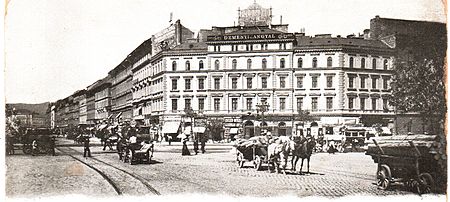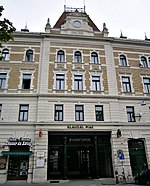Oktogon (intersection)
Budapest geography stubsSquares in Budapest

Oktogon is one of Pest's major intersections, located at the junction of the Grand Boulevard (Nagykörút) and Andrássy Avenue (Andrássy út) in Budapest, Hungary. This junction, one of the city's most important, is named for its octagonal shape.Oktogon is also a station on the yellow M1 (Millennium Underground) line of the Budapest Metro, which runs underneath Andrássy Avenue to Heroes' Square (Hősök tere).
Excerpt from the Wikipedia article Oktogon (intersection) (License: CC BY-SA 3.0, Authors, Images).Oktogon (intersection)
Andrássy út, Budapest Terézváros
Geographical coordinates (GPS) Address Nearby Places Show on map
Geographical coordinates (GPS)
| Latitude | Longitude |
|---|---|
| N 47.505272222222 ° | E 19.063397222222 ° |
Address
Andrássy út
Andrássy út
1067 Budapest, Terézváros
Hungary
Open on Google Maps











